RECOIL OFFGRID Gear Battle Belt Setup: Weight Off Our Shoulders
In This Article
Nicholas Nassim Taleb in his book Antifragile commented that some of the greatest inventions are creations so simple and ubiquitous, that they nearly go unnoticed, such as the spoon or chair. The belt itself likely fits into this category, and within the confines of load-bearing equipment centered on warfighting and modern combat, the bearer is under unique restrictions to their environment. When looking at a modern battle belt, the influences are circular. When considering an ideal battle belt setup, like a plate carrier setup, there are rules, and there are guidelines.
When addressing these rules, we must keep in mind two deciding questions: What environment will the belt be used and what other equipment will it be used with? The first question might influence decisions like color and material used. The second will have much more to say about what goes on the belt.
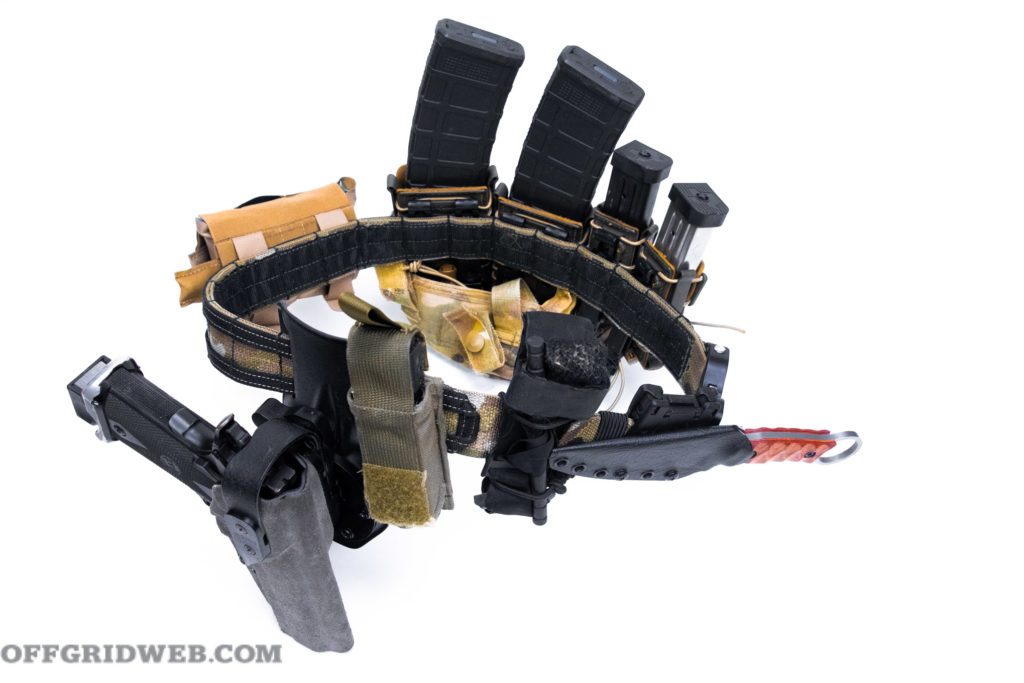
The first rule only applies to specific people. If you are part of an organization that has Battle Belt SOPs (Standard Operating Procedures) such as having a medical kit on your left hip, then that is a hard and fast rule to follow.

The second rule applies to where the belt should be worn. Assuming the wearer is of sufficient physical condition to perform the activities from which a battle belt is derived (i.e. combat, war, battle), when properly worn it will rest on top of the pelvis, not on the femur. While this may differ from where most people wear their pants, high-waisted jeans aside, a battle belt should sit higher, partly for mobility, and partly because wearing the belt lower reduces blood flow to the legs, fatiguing them faster in long movements.
This second rule will impact where specific caddies, carriers, and pouches are placed and stands firm so that a battle belt setup too tall to be worn with a plate carrier will not cheat by sagging onto the ball joint of the femur.
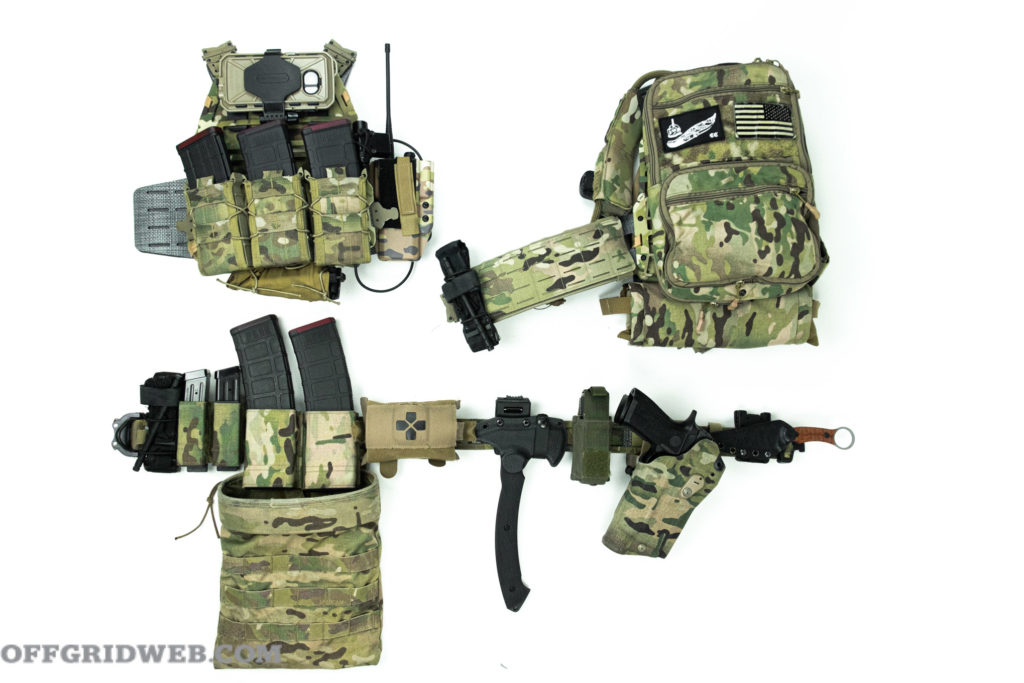
The final rule applies to material construction. At no point is it advantageous for a battle belt to fall apart or fail to bear the weight. It must be able to hold up over extended periods of time, and should not sag on the X-axis. A battle belt that bounces and flops around when the wearer is sprinting fails this rule. Buy quality.
These generalities govern the direction a battle belt setup will take. Having a common-sense air to them, they remain to be stated as a reminder. They themselves are not rules that will completely compromise a battle belt setup, but if ignored, they compound to eventually make the belt more of a detriment than an advantage.
The first principle: all other things being equal, choose the lighter option. A battle belt helps reduce the weight worn on a plate carrier, and it must have a net benefit beyond that option. At the same time, drawing a magazine from a belt is typically easier than from a plate carrier. It would be better to mount a “fast mag” pouch directly to the pants belt than to burden the bearer with a heavy, bulky battle belt.
The second principle: prioritize a color scheme for your operating environment. Mixing and matching colors works for Instagram, and thus has its place. Be honest with yourself when putting together a battle belt setup, we all appreciate it, even if it's just to look cool.
The third principle: a battle belt should be able to function as a stand-alone piece of kit, and integrate into multiple scenarios. Depending on body shape, it can be difficult to mount pouches, like medical gear which is typically worn closer to the small of the back, without making it uncomfortable to drive a vehicle. Pay attention to pouch shape and location, and if you get to choose your own gear, keep in mind how it will fit when doing more than shooting on the flat range.
The fourth principle is derived from CQB scenarios. Whenever possible, keep the size of a fully-loaded battle belt inside of shoulder-width. This goes doubly for those operating under the cover of darkness, as sound is just as likely to give away one's position. By limiting the circumference to one's stride, and identifying key points where gear could scrape against a door frame or catch a sling and impede the use of a carbine, this process continues ad infinitum.
The fifth and final principle: a properly outfitted battle belt should be comfortable enough to wear all day even when fully loaded.
As we've discussed before, there are differences between EDC, Range, and Battle/War Belt Setups. Over the years battle belts have changed, and fall into a few categories.
The most basic format of battle belt is one that has no other features except that it can be worn in addition to normal clothing and has the possibility of bearing magazines, medical pouches, a holster, and other pieces of equipment. The term “batman belt” summarizes this concept in a utility belt that carries a smorgasbord of useful gear.
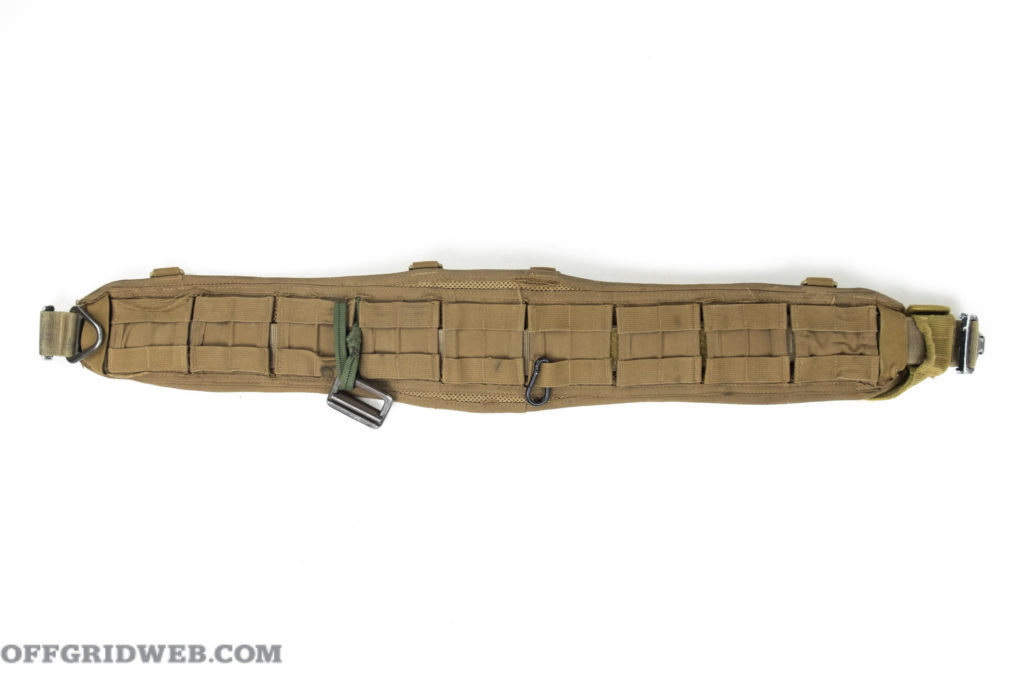
Above: The Viking Tactics Battle Belt has stood the test of time, and continues to serve as an effective mounting host for all types of gear.
About a decade ago, the classic utility belt was supplanted by larger, molle/pals padded belts that resembled what a barbarian would wear in the video game Diablo, and had their added value of distributing weight across a larger footprint. Reminiscent as well of the wraps worn by french fur trade voyageurs, these helped provide physical support when bearing a heavy load, much like a weightlifting belt, and still remain relevant in such circumstances.
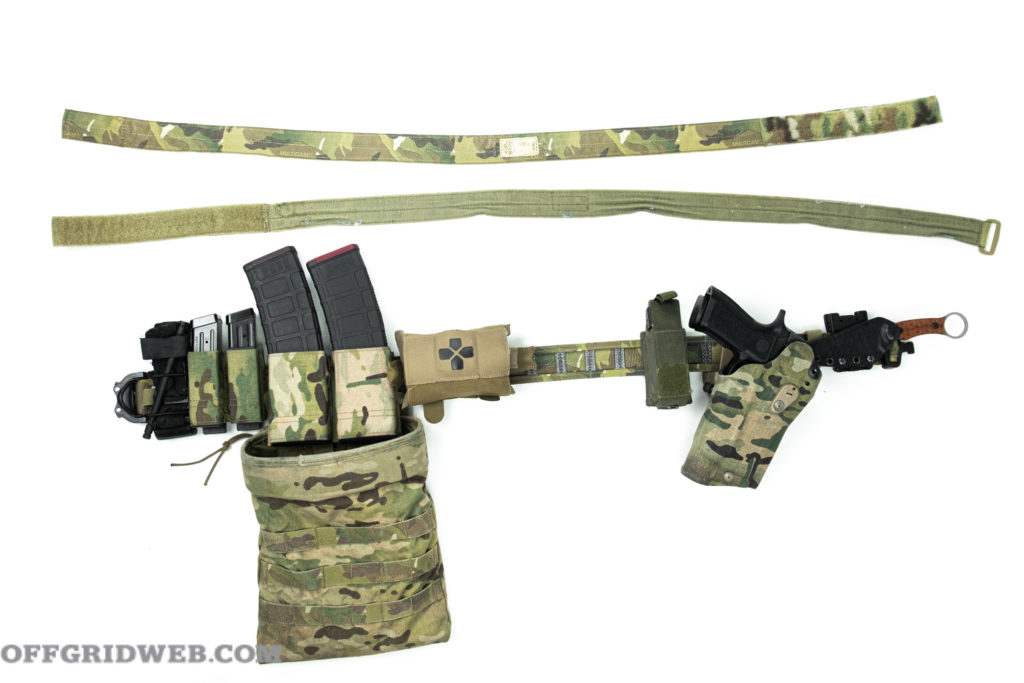
Above: The GBRS Assaulter Belt represents one of the most advanced versions of a multi-layered belt.
The third type of battle belt appears to be derived from competition shooting, where an inner belt is worn to meet the requirements of a rulebook, while also resulting in a surprisingly advantageous, near minimalist, lightweight platform for carrying tactical and survival gear, able to be donned quickly without compromising structure thanks to thermoplastics and semi-rigid materials.
A battle belt serves two (and for a select few, three) purposes: to spread the weight of gear carried across one's body, to provide easier access to certain things like magazines, medical equipment, and tools. For those performing rotary-wing operations, it can also serve as a place to attach one's lanyard, or if repelling, many battle belts can integrate directly into a harness. Put all together, an ideal battle belt setup brings all of this together, in one package that can be quickly donned and doffed.
Ammunition Pouches
An advantage to placing at least one rifle magazine pouch on the belt is that it will typically be faster to reload from the belt than from a plate carrier. Doing so will also help slim down the plate carrier, or open up real estate for other equipment. Magazines contribute to a majority of a battle belt's weight, and should be balanced with other pouches, holsters, and other gear carried.
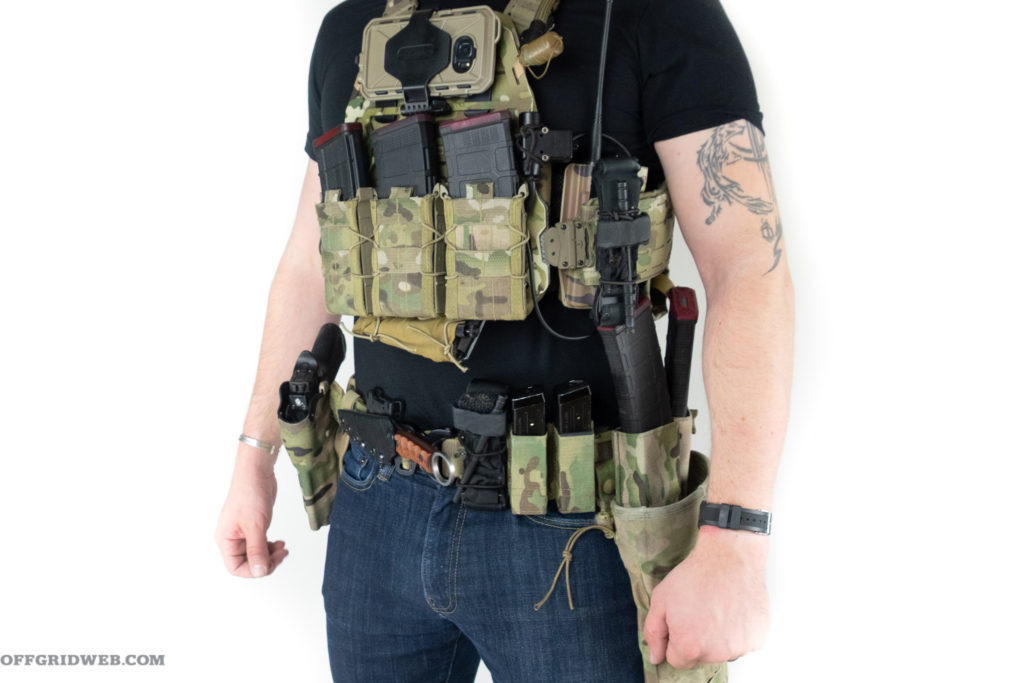
If a pistol is worn on the belt, an ideal battle belt setup will carry additional magazines for a complete package. Generally, pistol magazines are carried on the front hip, opposite the holster. Rifle Magazine fit just behind them, often landing on or just behind the hip joint.
Medical Gear
In addition to a stocked IFAK, or med pouch, a battle belt is an excellent place to carry additional tourniquets. Differing unit SOP's aside, the free space at the front of the belt is perfect for an additional tourniquet, shears, or knife. Anything that inhabits this space cannot interrupt drawing the pistol, decoupling the belt, or drawing a lanyard if pertinent, and be aware that gear carried in this space should be considered tertiary at best, as it will be the first to be lost when low-crawling through a rough field.
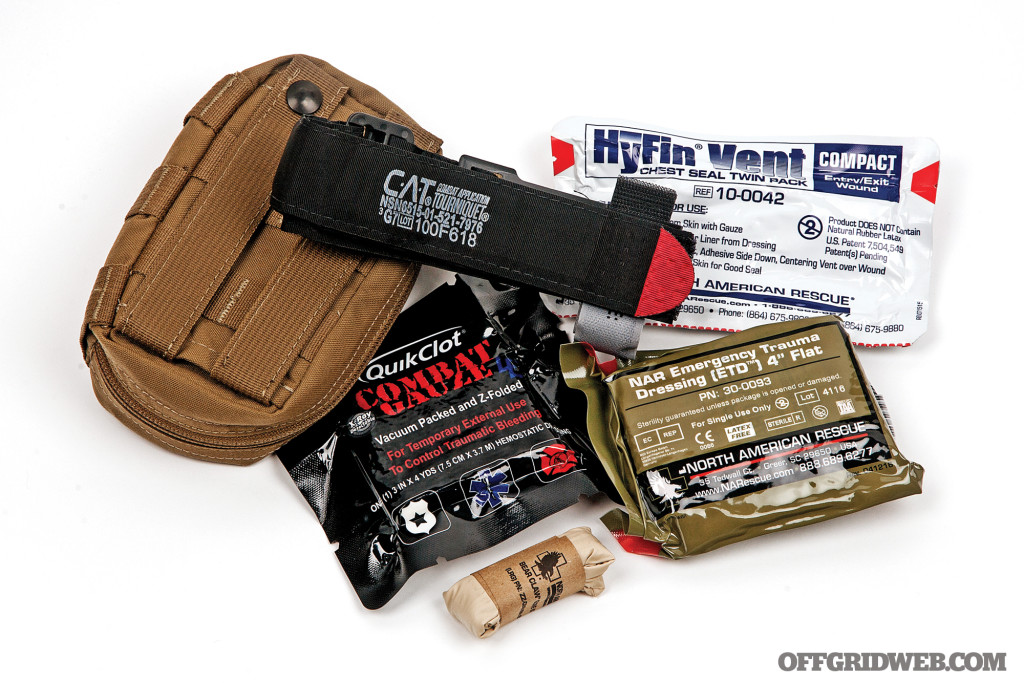
Above: North American Rescue IFAK with C-A-T, hemostatic gauze, and other trauma care supplies.
An advantage of stowing one's medical gear on a battle belt is that in the event that it must be used, the belt can often be removed, and the medical equipment accessed with greater ease. This should not be considered the only option, as there are circumstances such as a damaged spinal column where being rolled over to remove the belt could cause additional harm. Instead, having the ability to remove the belt to access medical equipment, while not being required to do so should be considered an advantage.
Holsters
The idea of a drop leg holster was intended to aid in drawing a pistol when wearing a plate carrier. What it turned into was a bastardization of “thigh holsters” that ended up residing somewhere near the kneecap. In our more modern, more civilized era, the drop leg holster has returned to its rightful location: about even with the ball joint of the femur. This is accomplished by following the second rule: wearing the belt above the pelvis, and provides enough flexibility to draw the pistol when seated in a vehicle.
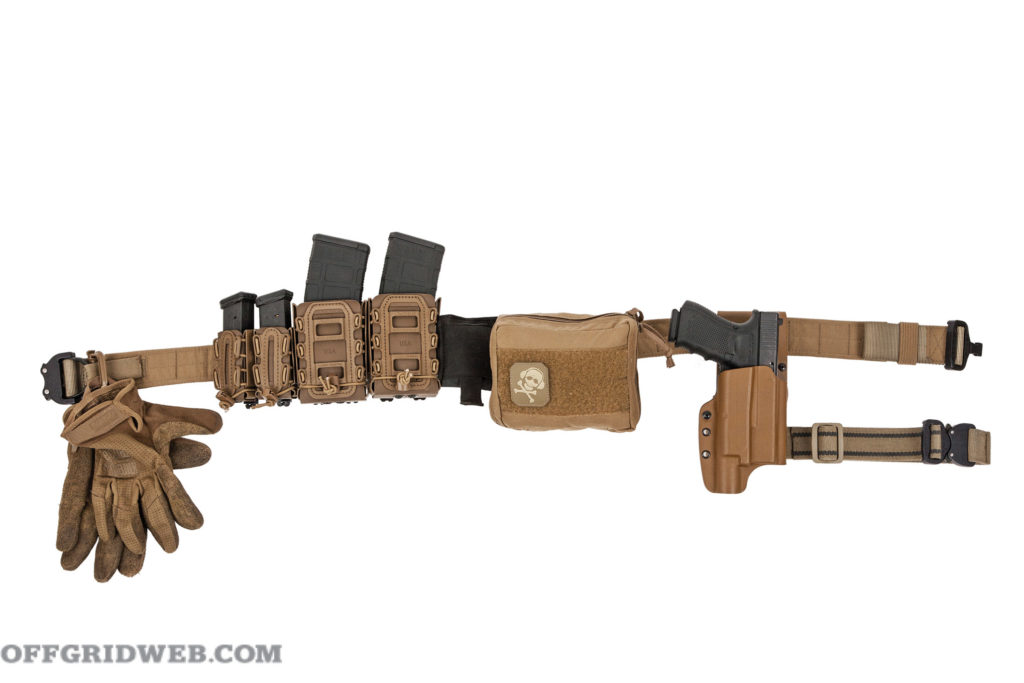
Depending on body shape, a holster such as the mid-ride Safariland series fits this bill. Veil Solutions, G-Code, T.Rex Arms, Guerilla Tactical, and more options ride on the belts of professionals around the world, and despite one's choice, it must not sag too low, and be able to be drawn even when wearing body armor above it. Ideally, a battle belt can function on its own but serves best to support a higher level of gear. A holster is not an item to cut corners or pinch pennies on.
Supporting Gear
Small items, like a multitool or a knife are perfect additions to a belt. In contrast, even as the belt provides more space to attach mission-specific gear, one is bound by the second rule (not restricting blood flow) and respects the third, fourth, and fifth principles.
Dump Pouch
Closest to dogma, a Dump Pouch is a piece of gear that has great utility, with minimal weight cost. A battle belt is a perfect place to attach a dump pouch. When wearing a plate carrier, battle belt, or rucksack with a cummerbund, suddenly the wearer will discover that their pockets are harder to reach. Lower hanging cargo pockets are a temporary solution, albeit a detriment in long-term survival situations. After miles of travel, a combination of sweat and weight turn items carried in cargo pockets into sandpaper grinding into that soft spot just above the knee. That rubbing creates an opportunity for infection.
A dump pouch solves this problem, simultaneously isolating snacks, spare water, and loose magazines from the pockets which themselves create an opportunity for infection, and also a place to collect spent magazines.
Sharps
There is clearly an advantage of a belt knife, and the bearer must recognize that what is stored on the belt must be able to be lost in the most extreme of situations.
Whether to take weight off of a plate carrier or to be a second line layer of emergency gear, a battle belt setup will evolve over time. The rules and principles have come from decades of use by professionals all around the word, and center on being equipped for a prolonged survival event, or a firefight.
Just as with other tactical or survival gear, one must remain true to their purpose, as excessive bulk is just as dangerous in the long run. Good ideas require testing, and this is no exception. It is better for one to find out that their belt causes chafing during long movements, or their magazines fall out when sprinting before they manifest under the duress of life-or-death.
A Battle Belt fulfills many needs, for some it is that added layer of security in a bug out bag, for others, it is mission essential gear. From M203 shells to militools, follow these rules and principles to refine your setup. v
 STAY SAFE: Download a Free copy of the OFFGRID Outbreak Issue
STAY SAFE: Download a Free copy of the OFFGRID Outbreak Issue
No Comments